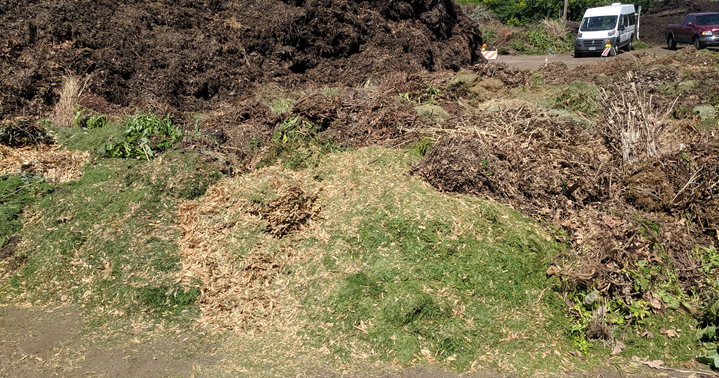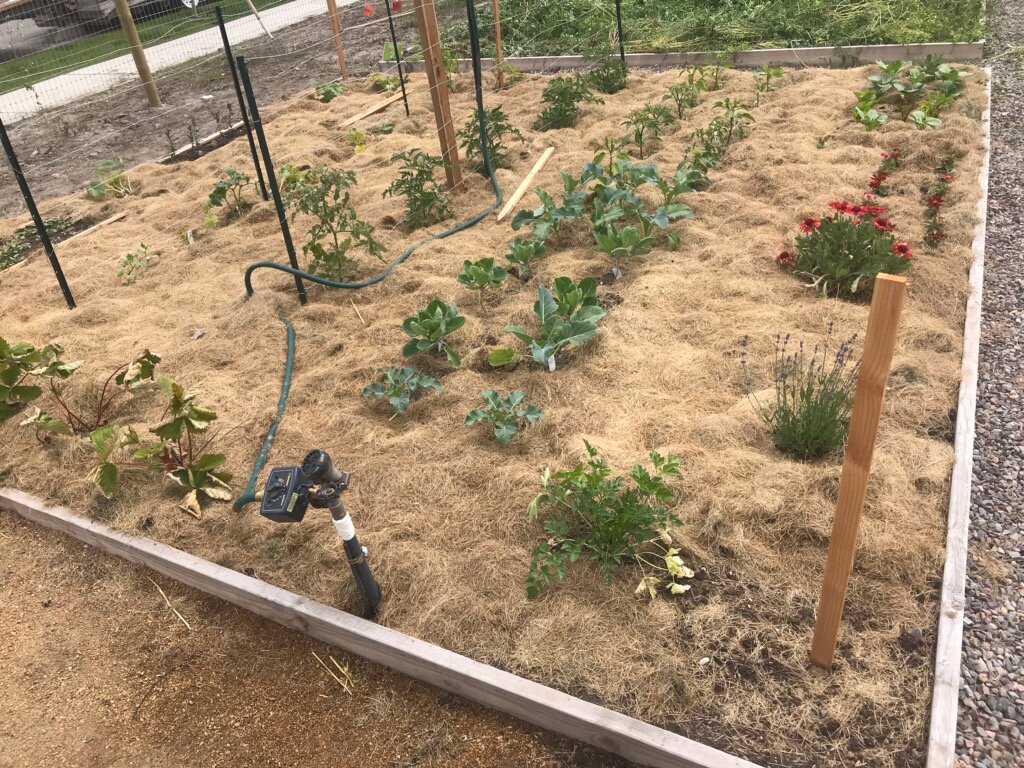Featured
Table of Contents
Discover More About Vegetables
Individuals concerned about appearance can select a mulching lawn mower, he suggested, as those cut grass carefully. Still, yard cut with a rotary lawn mower won't remain for long."Lawn clippings are made of really soft tissue that disintegrates quickly," Mann said. While letting yard clippings lie is best, there are 2 factors you may wish to retrieve them.
Second, never let lawn clippings blow into roadways or pathways, because healthy or not the turf blades high in nutrients can trigger issues for sewers and waterways. Here are a couple of other ideas for mowing your lawn the very best method: "The sharpness of the blade is vital," Mann said. People mowing with a dull blade are shredding their yard rather of appropriately cutting it, which leaves space for fungi to attack.
Sometimes, it can cause yard to die. Changing the lawn mower blade or sharpening it once a year can avoid that. A lot of grass varieties across the nation grow at 2.5 to 3 inches, but some, such as those in Florida, might like to be cut much shorter or taller, Mann said. If you're not sure of for how long to leave your lawn, seek advice from a landscape specialist about what varieties of turf are growing in your lawn.
This details was put together by Anoka County. For extra recyclers in your location, search online. Any recycler wanting to be added to this list might contact recycle@co.anoka.mn.us!.?.!. The details provided in this directory site is compiled as a service to residents. A listing in this directory site does not suggest endorsement or approval by Anoka County.
My boy has actually been attempting to construct out of 3 large piles of grass included by plastic fencing. With all the rain we've had, the stacks have actually become wet, compressed, thick and very heavy. What can be done to make these piles more efficient at breaking down? They have actually been turned, however we recently added a lot of grassand that plus the rain has made things a compacted mess.
That should be truly great for the garden ... no?-- Elizabeth in North Plainfield, New Jersey "No" is right, Elizabeth. 'Green manure' is a crop that you grow to plow into the ground as living fertilizer. What your son has is just a huge green stinky mess. (In fact, THREE huge green smelly messes.) This is a common mistake for novice composters, particularly in the summer, when grass clippings are abundant.
Those clippings are EXTREMELY high in Nitrogenabout 10%. That's quite much the very same level you 'd find in really HOT manures, like bat and bird guano. In the most basic sense, these Nitrogen rich elements don't end up being the garden compost in a pile; instead they offer food for the billions of little microbes that fuel the procedure of turning the other stuffthe so-called 'dry browns' that must comprise at least 80% of a pileinto the garden gold our plants so crave.
Discover More About Landscaping
The advantage of including things like lettuce leaves, apple cores and broccoli stalks to a compost heap or is mostly in the soothing of your recycling conscience, not in their ability to produce high quality garden compost. Now you can utilize clippings to make excellent garden compost, but to do so you have to blend little quantities of well-shredded yard clippings in with big quantities of well-shredded leaves.
(The very best compost heap follow the Goldilocks guideline: Not too wet and not too dry. Great deals of air flow too. I know, Goldilocks didn't discuss airflow. However she needs to have.) Anyway, the result of such an honorable business is the elusive, much sought-after garden change referred to as "hot compost". Compost that formulate rapidly with the assistance of a natural source of high Nitrogen is better food for your plants and offers much more life for your soil.
And it's the very best kind for making compost tea. "Cold compost"the things that results when you just pile a great deal of things up, expect the very best and really get some completed product after a year or socan be a great plant food and soil improver, but hot compost is MUCH much better.

I fear that your huge stacks of slimy wet yard clippings will not improve one bit with the passage of time. Just the opposite in truth. Ah, however your timing is excellent to get it right, as we are quick approaching autumn leaf fall. Let great deals of leaves gather on the yard during a drought (do not let wet leaves build up), go over them with a mower, bag up what must be a perfect mix of great deals of wonderfully shredded leaves and a little quantity of well-shredded yard and then empty this mixture into a big wire cage, a slatted wooden bin, a or something else to hold all of it in place great and cool.
(Individuals who inform you to 'layer' the components in a garden compost pile stopped working physics.) Yes, this will only use a little percentage of the clippings generated by the average yard, which's an excellent thing. Because exterior of that fall leaf drop window, you should NOT be bagging your turf clippings.
I utilize "quotes" since there's no 'mulch' of any kind involved here. A bad name for an exceptional instrument of sustainability, mulching lawn mowers crush clippings into an almost invisible powder that they then return to your lawn. A powder that's 10% Nitrogen; about as high a natural number as you can get.
DON'T utilize any clippings from an herbicide-treated lawn in a compost heap. A few of the potent chemicals in use today can endure even hot composting and could kill any plants that get the compost later. Oh, and stop utilizing that hazardous stuff too!!!.
Read More About Vegetables
The Department of Public Works offers core public services for the security and benefit of the people of Dayton. These necessary services-- including Civil Engineering, Fleet Management, Parks and Forestry, Street Upkeep, and Waste Collection-- all enhance Dayton's lifestyle. Click among the links to the delegated check out highlighted services supplied by Public Functions.

What can I state? Yard clippings are vital to composting. But you need to find out how to do it correctly so both your lawn and garden compost bin more than happy! The majority of house owners rapidly realize that their garden compost bin or system can not manage all that turf! The following info will assist you to better comprehend how to recycle those lawn clippings.
So, let's start there. Forget those long-held beliefs that grass clippings left on a lawn smother the yard underneath or trigger thatch. Grass clippings are actually good for the lawn. From now on, do not bag your yard clippings: "lawn cycle" them. Grasscycling is an easy, easy chance for each property owner to do something helpful for the environment.
And the finest part is, it takes less energy and time than bagging and dragging that grass to the curb. Like the fellow in the image to the left, you may even take your turf clippings out for a Sunday bike flight; now that's grasscycling taken to the severe! Grasscycling, simply put, is the practice of leaving yard clippings on the yard or using them as mulch.
Yard clippings include water-saving mulch and motivate natural soil aeration by earthworms. No bagging or raking the lawn (Whew!) Plastic lawn bags do not wind up in the landfill 50% of your lawn's fertilizer requirements are satisfied, so you reduce time and cash invested fertilizing Less polluting: reduces the requirement for fertilizer, pesticides and herbicides Non-thatch triggering, therefore making a yard energetic and resilient Makes you feel excellent and green all over! Yahoozy! Not only does it make looking after your lawn easier, however grasscycling can also reduce your mowing time by 50% due to the fact that you don't need to get afterwards.
To grasscycle effectively, cut the turf when it's dry and always keep your lawn mower blades sharp. Get rid of no greater than 1/3 of the leaf area with each mowing. Trim when the yard is dry. Utilize a sharp lawn mower blade. A dull lawn mower blade contusions and tears the yard plant, resulting in a rough, ruined appearance at the leaf pointer.
In the spring, lease an aerator which eliminates cores of soil from the yard. This opens the soil and permits higher motion of water, fertilizer, and air by increasing the speed of decay of the yard clippings and improving deep root growth. Water completely when required. Throughout the driest period of summer, lawns require a minimum of one inch of water every 5 to six days.
Learn More About Shop
Turf clippings, being mostly water and really rich in nitrogen, are troublesome in garden compost bins because they tend to compact, increasing the opportunity of becoming soggy and producing a strong ammonia-like smell. Follow these pointers for composting this valuable "green", consequently minimizing smell and matting, and increasing quick decomposition:, intermixed in a 2-to-1 ratio with "brown" materials such as dry leaves or plant debris (saving/bagging Fall's leaves is perfect for Spring/Summer grass composting). That's an average of seven hours per season. Heck, that's a day at the beach!. No unique mower is essential. For best outcomes, keep the mower blade sharp and mow just when the lawn is dry. When clippings break down, they release their nutrients back to the yard. They include nitrogen, potassium and phosphorus, in addition to lesser amounts of other important plant nutrients.
There's no contaminating run-off, no use of non-renewable resources and no damage to soil organisms or wildlife. The expense of trucking yard clippings to land fill websites comes out of homeowners' taxes. This is a wasteful practice: all those nutrient-rich clippings might be fertilizing individuals's lawns, consequently conserving money on fertilizers and water bills.
Grasscycling is an accountable environmental practice and an opportunity for all homeowners to reduce their waste. And the very best part is, it takes less time and energy than bagging and dragging that turf to the curb. Today, 58 million Americans invest around $30 billion every year to preserve over 23 million acres of yard.
The very same size plot of land might still have a small yard for entertainment, plus produce all of the vegetables required to feed a household of six. The lawns in the United States consume around 270 billion gallons of water a week: enough to water 81 million acres of natural vegetables, all summer long.
farmland, or approximately the size of the state of Indiana. Lawns use 10 times as lots of chemicals per acre as commercial farmland. These pesticides, fertilizers, and herbicides run off into our groundwater and vaporize into our air, triggering extensive contamination and worldwide warming, and greatly increasing our threat of cancer, heart problem, and abnormality.
In truth, yards utilize more equipment, labor, fuel, and agricultural toxic substances than industrial farming, making yards the biggest farming sector in the United States. But it's not simply the domestic yards that are lost on lawn. There are around 700,000 athletic grounds and 14,500 golf courses in the United States, a number of which utilized to be fertile, efficient farmland that was lost to developers when the local markets bottomed out.
To cut correctly, a number of concerns need to be thought about: height, frequency, clipping elimination, and blade sharpness. The chart below identifies the most common varieties of turfgrass grown in yards, and the height to set your lawn mower. Read the pointers listed below for additional instructions. Kentucky Bluegrass 2.5-3.5" 4" Fine/Tall Fescue 2.5-3.5" 4" Seasonal Ryegrass 2.5-3" 4" Bermudagrass.5-1" 2" Zoysia.5-1" 2": Under most situations, lawns ought to be cut at 2.5-3-inches.
Latest Posts
Soundproof Everything Tips and Tricks
Mandevilla, A Climbing Trumpet Flower Vine – Care, Pruning ...
Sun Parasol® Apricot - Mandevilla Hybrid - Proven Winners